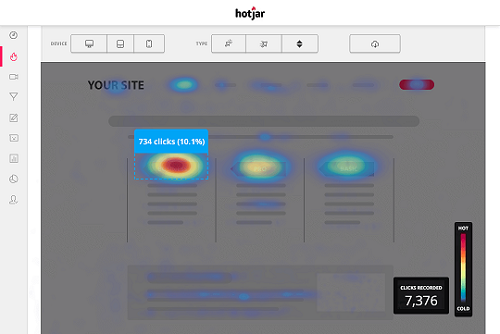The Role of Social Media in Conflict Zones: An In-depth Study on Ukraine, Israel, and Beyond
The advent of social media has undeniably transformed the landscape of global communication. In conflict zones such as Ukraine and Israel, social media platforms are not just tools for sharing and receiving information but have become vital lifelines for survival, communication, and advocacy. This paper delves into the multifaceted role of social media in these contexts, revealing its potential to both aid and complicate conflict situations.
Real-Time Information Dissemination
In the rapidly evolving environments of war zones, access to real-time information is not just crucial—it can often be a matter of life or death. Social media platforms like X, Facebook, and Telegram have filled this need in Ukraine and Israel. For instance, during the 2014 crisis in Ukraine, citizens, journalists, and even government officials relied heavily on X to share updates on the ground situation. The platform became a real-time news source, offering insights into the conflict that traditional media outlets could not provide.
Similarly, in the ongoing Israel-Palestine conflicts, social media has been instrumental in conveying real-time updates about missile attacks, military operations, and civilian casualties. This immediate access to information can help individuals make informed decisions about their safety, plan escape routes during attacks, or find safe shelters.
Humanitarian Aid Facilitation
Beyond its function as a news dissemination tool, social media has also significantly mobilised humanitarian aid. Platforms like Facebook and Instagram have facilitated fundraising campaigns for medical supplies, food, and shelter for war-affected regions. In Ukraine, volunteers used social media to organize aid for soldiers and civilians alike. They coordinated logistics for food delivery, arranged transport for medical supplies, and even used these platforms to find accommodations for displaced people.
In Israel and Palestine, social media has been used to coordinate emergency responses during attacks. Platforms like X have been used to share locations of medical facilities, provide updates on available resources, and mobilize local and international support for those affected by conflict.
Connection Amidst Isolation
In times of war, physical isolation becomes a harsh reality for many. However, social media provides a platform for connection amidst this isolation. Whether it's families keeping in touch when separated by conflict or communities rallying together for support and resilience, social media platforms have proven invaluable. In both Ukraine and Israel, social media has helped maintain a sense of community during times of upheaval. It has allowed people to share their experiences, offer emotional support to each other, and foster a sense of unity against adversity.
Social Media Saving Lives
While there is a significant amount of data on the use of social media in conflict zones, specific statistics on the number of people saved through social media in wars are difficult to quantify and are not readily available. The complexity of conflict situations, coupled with the multifaceted role of social media in these contexts, makes it challenging to attribute survival rates directly to social media use.
However, it is evident that social media platforms have played a crucial role in providing real-time information, facilitating humanitarian aid, and enabling connections during times of war, which undoubtedly has contributed to saving lives. For instance, during the 2011 Libyan Civil War, social media was extensively used as a tactic in armed conflict, marking the start of its widespread use in such scenarios.
Moreover, an estimated 4.4 to 4.6 billion people worldwide use social media platforms such as Facebook, YouTube, Instagram, TikTok, and X [1]. During conflicts, these platforms become essential tools for sharing information about safe shelters, medical facilities, and aid distribution points, potentially saving countless lives.
Social media's impact extends beyond the immediate conflict zone. It also changes the modern war experience for military personnel and their families, providing a communication channel that can contribute to their well-being and survival.
While we lack specific numbers, the critical role of social media in conflict zones underscores its potential to save lives and mitigate some of the devastating effects of war. However, more research is needed to quantify its precise impact on survival rates in these contexts.
The Double-Edged Sword
While the benefits of social media in conflict zones are clear, it's crucial to acknowledge its potential downsides. Misinformation can spread rapidly on these platforms, leading to unnecessary panic, escalating tensions, or even inciting violence. Furthermore, the open nature of social media can pose security risks, with sensitive information being exposed to adversarial parties. In both Ukraine and Israel, there have been instances of misinformation and propaganda spread through social media, exacerbating the already tense situations.
Conclusion
Social media's role in conflict zones like Ukraine and Israel is a testament to its power as a communication tool. However, it is a double-edged sword that can either aid or complicate conflict situations. As its influence continues to grow, it is essential for users, stakeholders, and policymakers to understand and navigate its potential and pitfalls effectively. The future of conflict communication may very well hinge on how well we can harness the power of social media while mitigating its risks.
Former Computer Engineer, Tech, EdTech and eCommerce Entrepreneur, Keynote Speaker on Digital Marketing and Entrepreneurship, Social Media Strategist, eCommerce Business Mentor, Trainer, Writer, Blogger, Mother, Daughter, and Dreamer.
Follow her on:
Twitter:@MiliPonce
Instagram: @MiliPonceOfficial
Facebook: /MiliPonceOliver
Pinterest: /MiliPonce
LinkedIn: /in/MiliPonce
 Reviewed by Mili Ponce
on
Wednesday, October 18, 2023
Rating:
Reviewed by Mili Ponce
on
Wednesday, October 18, 2023
Rating:















 Entrepreneur, international speaker on Social Media Marketing. First one in the UK to write and speak in conferences about Twitter as a marketing tool. Consultant to Corporate Companies, Government Organizations, Marketing Managers and Business Owners.
Entrepreneur, international speaker on Social Media Marketing. First one in the UK to write and speak in conferences about Twitter as a marketing tool. Consultant to Corporate Companies, Government Organizations, Marketing Managers and Business Owners. Aspiring novelist with a passion for fantasy and crime thrillers. He hopes to one day drop that 'aspiring' prefix. He started as a writer and soon after he was made Executive Editor and Manager of the team at Social Songbird. A position he held for 5 years.
Aspiring novelist with a passion for fantasy and crime thrillers. He hopes to one day drop that 'aspiring' prefix. He started as a writer and soon after he was made Executive Editor and Manager of the team at Social Songbird. A position he held for 5 years. Musician, audio technician, professional tutor and a Cambridge university English student. Interested in writing, politics and obsessed with reading.
Musician, audio technician, professional tutor and a Cambridge university English student. Interested in writing, politics and obsessed with reading. Recently graduated with a BA in English Literature from the University of Exeter, and he is about to study an MA in Journalism at the University of Sheffield. He is an aspiring journalist and novelist; in his free time he enjoys playing chess, listening to music and taking long walks through nature.
Recently graduated with a BA in English Literature from the University of Exeter, and he is about to study an MA in Journalism at the University of Sheffield. He is an aspiring journalist and novelist; in his free time he enjoys playing chess, listening to music and taking long walks through nature. Lucy is an undergraduate BSc Politics and International Relations student at the London School of Economics and Political Science.
Lucy is an undergraduate BSc Politics and International Relations student at the London School of Economics and Political Science. Anna Coopey is a 4th year UG student in Classics at the University of St Andrews in Scotland. She is a keen writer and researcher on a number of topics, varying from Modern Greek literature to revolutionary theory.
Anna Coopey is a 4th year UG student in Classics at the University of St Andrews in Scotland. She is a keen writer and researcher on a number of topics, varying from Modern Greek literature to revolutionary theory.
